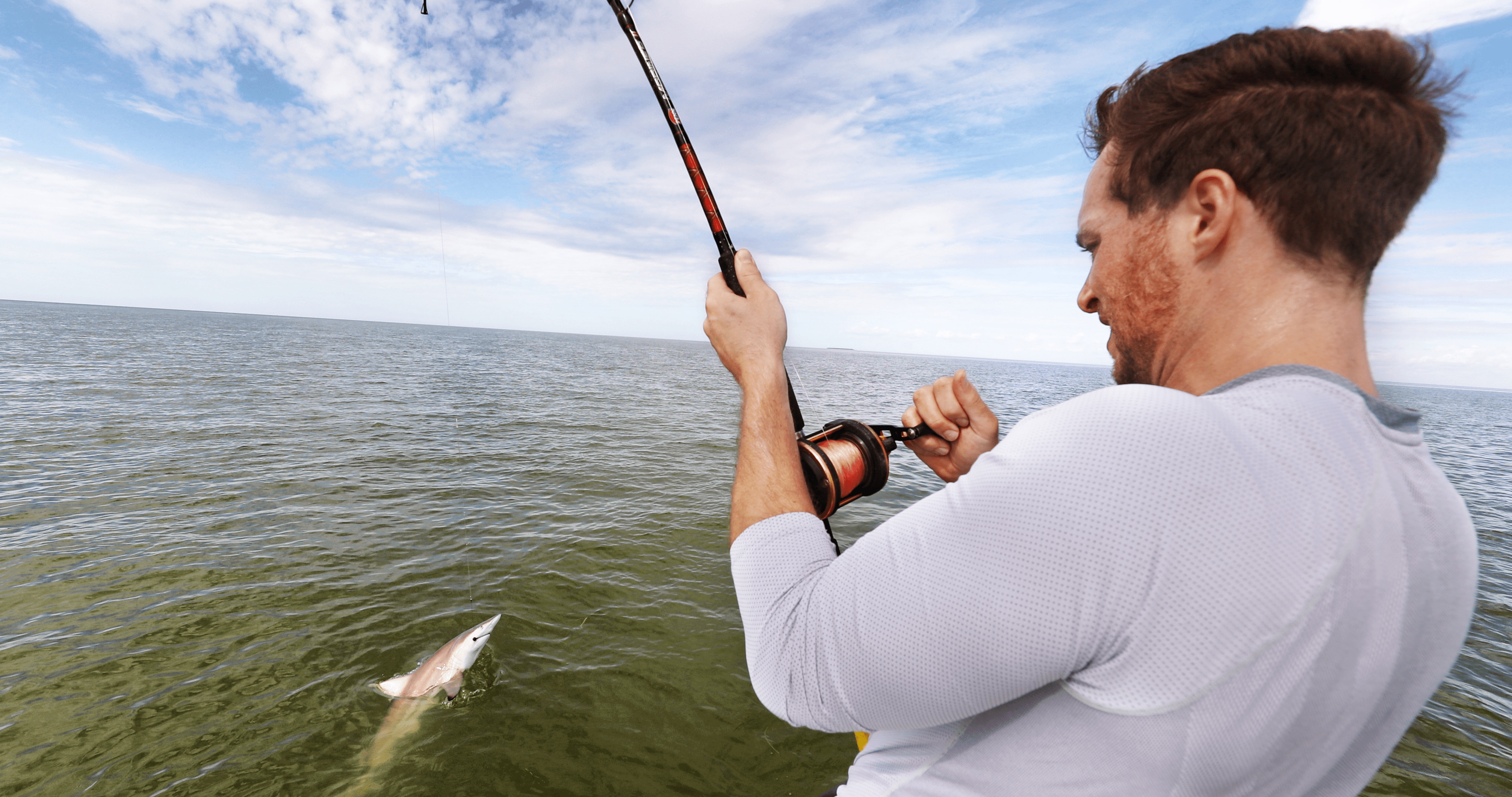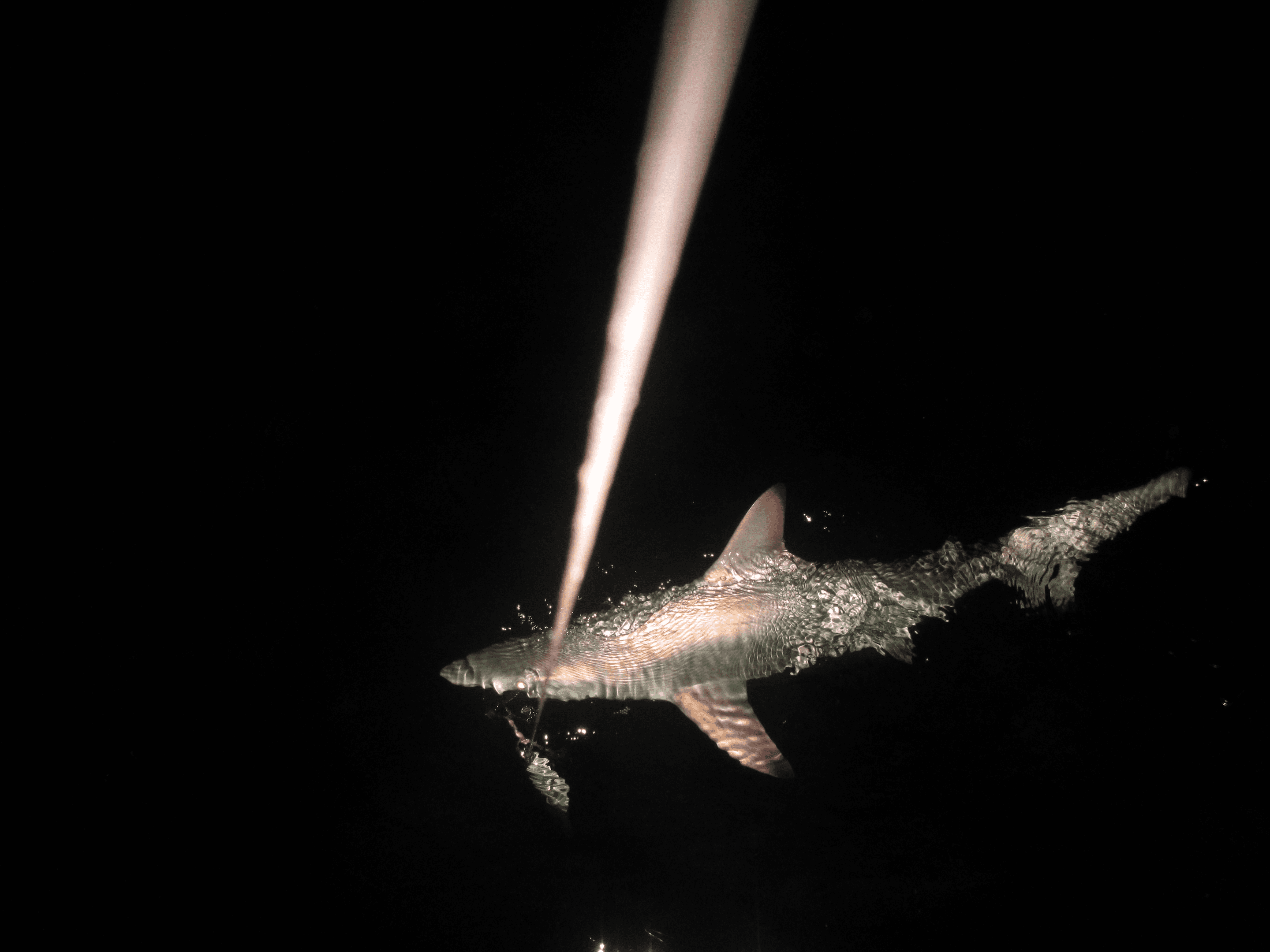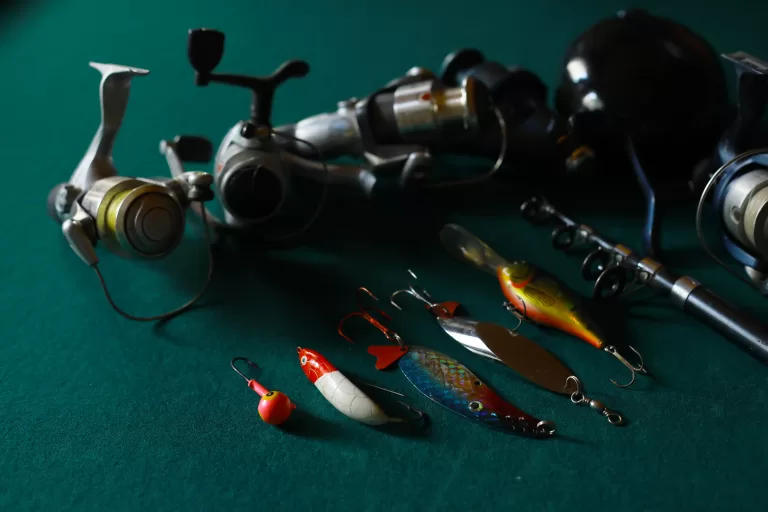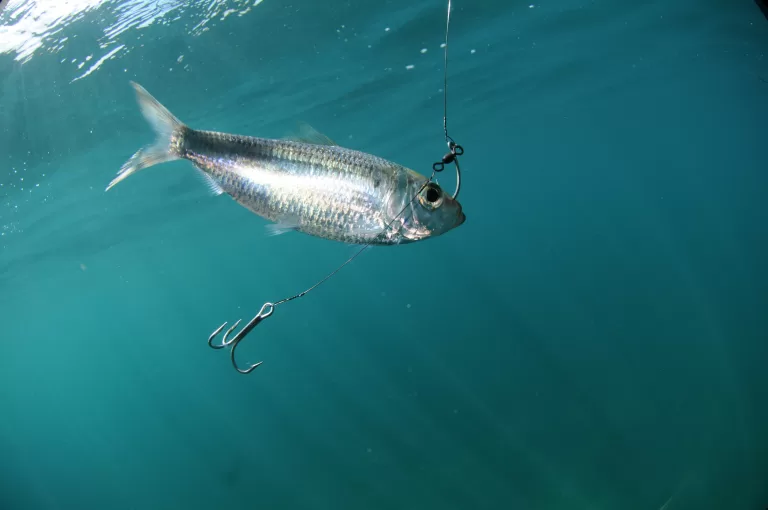Top Shark Baits: Your Ultimate Guide to Successful Shark Fishing
Are you wondering what the best shark baits are to increase your chances of a successful catch? Whether you’re targeting specific shark species or looking to optimize your fishing techniques, the right choice of bait is crucial. In this guide, we’ll explore the most effective shark baits and offer practical advice on how to use them, ensuring you’re prepared for your next shark fishing adventure.
Key Takeaways
- Select the right bait depending on the shark species, preferring fresh, bloody, and oily options like mackerel and barracuda, while using natural prey like stingrays for larger sharks.
- Use proper gear when fishing for sharks which includes a medium to heavy action rod, high-capacity reel, 50-100 pound braided line, and a wire leader to prevent bites from cutting the line.
- Understand and follow local fishing regulations and engage in ethical practices, like using non-stainless steel circle hooks and tools for safe release to ensure the conservation of shark populations.
Choosing the Right Bait for Different Shark Species

Sharks have a reputation for being indiscriminate eaters, but the truth is, they’re selective predators with refined tastes. For this reason, choosing the right bait is fundamental to successful shark fishing. The best shark bait should ideally mimic the local fish, be bloody, and oily to attract these skilled predators.
Some great bait choices for sharks are:
- Bonito: A favorite of many shark species, it is an oily and bloody fish that can look like a fillet mignon for sharks!
- Mackerel: with its pungent smell and high oil content, it serves as an irresistible year-round bait.
- Menhaden: oily bottom-feeders that work well as live or chunk bait.
- Barracuda: strong-smelling bait that is great for targeting a diverse range of sharks.
For larger species like Hammerhead and Tiger sharks, try using their natural prey, such as stingrays or Jack Crevalle.
Fresh vs. Frozen Bait
The freshness of bait, including fresh fish, holds paramount importance. Fresh bait exudes stronger scents and has higher levels of oils and blood, making it highly appealing to the evolved senses of sharks, which favor fresh prey. Additionally, the texture of fresh bait is more condensed and taut, helping it to stay on the hook during casting and being more resistant to the thrashing of sharks.
Conversely, once thawed, frozen bait can lose its firmness, eventually falling off the hook in water due to loss of integrity. Repeated freeze-thaw cycles further degrade the bait’s quality by accelerating rot, thereby reducing its appeal to sharks and its ability to stay secured on the hook. So, whenever possible, opt for fresh bait.
Natural Prey as Bait
Sharks, being apex predators, are hard-wired to pursue natural prey. Using a shark’s natural prey in the form of cut or whole fish as bait is an effective method for attracting sharks. Stingrays, being a natural prey for species such as hammerheads and tiger sharks, are effective as cut bait and can be legally used year-round.
If you opt for whole fish, it’s advisable to cut them into chunks and ensure the hook barb is exposed; this is an effective way to prepare and use bait for shark fishing. The scent of natural prey in the water is a powerful attractor that can bring sharks in from afar.
Essential Gear for Fishing Sharks

The right gear can make all the difference when it comes to shark fishing. You’ll want to pair a heavy to extra-heavy action surf or spinning rod with a high-capacity reel for the best results. This is because you need a rod that’s strong enough to handle a shark’s weight and a reel that can hold enough line for a long fight.
For your line, opt for 50-100 pound braided or mono line to ensure adequate strength and cutting resistance. To prevent the sharp teeth of sharks from cutting your line, use a wire leader in combination with the braided line. And don’t forget about the hooks. Circle hooks are preferred for shark fishing as they are made to hook the shark in the corner of the mouth, enhancing the safety for the shark and the angler.
Rod Selection
It’s vital to select the appropriate rod when shark fishing. Your rod should be made of high-quality, durable materials such as fiberglass for optimal strength and flexibility. The typical length for a shark fishing rod is between 6 and 9 feet. Shorter rods offer more control and power, while longer rods provide better casting distance from shore.
For shark fishing rods, it is recommended to choose rods with the following characteristics:
- Rod action: Heavy or extra-heavy options are preferred, as they provide the power needed for large sharks. These rods bend mostly near the handle.
- Power rating: Heavy or extra-heavy options are also recommended for the power needed to handle large sharks.
- Reel seat: A sturdy reel seat is crucial to hold the reel securely without any wobble, ensuring a reliable connection during the catch.
Reel and Line Recommendations
In addition to a robust rod, shark fishing demands a high-quality, durable reel equipped with a large line capacity and a robust drag system. The Daiwa BG 6500 to 8000 reel, for instance, is favored for its durability, 33.0 lbs drag, and its ability to hold a significant amount of braided line, making it suitable for shark fishing. For conventional reels, the Penn Senator 9/0 or 12/0 is a great choice for line capacity and durability.
As for the line, braided line is preferred for its strength and low stretch. Here are some recommendations for shark surf fishing:
- Use 50 to 100 lb test or higher braided line.
- Combine a braided main line with a wire leader.
- Use a spliced connection to connect the braid to mono, as it is the strongest choice.
Top Bait Choices for Shark Fishing

So, which bait is best for shark fishing? Well, popular bait options for shark fishing include:
- Mullet
- Menhaden
- Blue runners
- King Mackerel
- Spanish Mackerel
- Bonito
These options are known for their effectiveness in attracting sharks, but your specific bait choice might depend on whether you’re using live bait or cut bait.
Live Bait Techniques
Employing local fish species as live bait proves highly effective in shark fishing. Sharks are familiar with and attracted to prey in their environment. A live bait in distress produces signals in the water that can quickly catch the attention of nearby sharks, making it an efficient technique for hooking sharks.
Blue runners, known for being strong swimmers, are ideal live baits that can trigger distress signals powerfully attracting larger sharks, such as bull shark. Similarly, larger Jack Crevalle make prime live bait for angling tiger sharks. Smaller Barracudas can also be used as live bait due to their distinctive smell and oily flesh, which are effective in luring sharks from afar.
Cut Bait Tips
Keep in mind, the freshness of cut bait is pivotal. Sharks are inclined towards fresh, bloody, and oily fish rather than scavenged meals. Using fresh local fish as cut bait can attract sharks due to their blood and oil. Bonito, which is rich in scent and oil, is an excellent choice for cut bait in offshore shark fishing, especially in deeper waters where larger sharks are prevalent.
Large bluefish fillets, cut laterally, can provide multiple high-quality cut baits that effectively disperse blood and oil in the water. To increase the likelihood of a successful hook set, consider removing the tail from cut bait to prevent spinning. Rigging cut bait like mackerel fillets, folded over with the hook running through two layers, creates a strong scent trail that is compelling to sharks.
When using fillet baits, placing the hook through the top ‘shoulder’ part of the fillet allows the rest to move enticingly in the water, mimicking the action of strip baits for other species.
Best Times and Locations for Shark Fishing

The timing and location of your fishing can greatly influence your success in shark fishing. To find optimal spots for shark fishing, search for beaches with deeper water or recognizable troughs along the shore. Steep shorelines and areas where waves break only one or two times can indicate the presence of deeper water, a preferred habitat for many shark species.
For some prime shark fishing locations in Florida check out our blog here.
Evening and Night Fishing
But, when is the best time to fish for sharks? Evening and nighttime provide low-light conditions, which are preferred by sharks when hunting. Sharks are more active during these hours because they rely heavily on their sense of smell to find prey.
Less light means scent plays a larger role in their hunting process, making evening and nighttime ideal times for shark fishing.
Identifying Prime Beach Spots
When it comes to the best shark fishing, look for beach spots where:
- Smaller fish like bluefish and croakers move into shallower waters, as this attracts sharks closer to shore
- Sharks can also be found near structures like piers or reefs where bait fish congregate
- Coastal areas like migration corridors or nursery grounds are also good spots for shark fishing.
For a greater likelihood of encountering sharks, including the sandbar shark, fish either in the trough or cast past the sandbar to the deeper water on the other side, if reachable, as this is where you can catch sharks.
Catching Your Own Bait

The experience of catching your own bait can add to the thrill of fishing. Mullet, herring, and sardines can be effectively caught using a cast net. For larger bait fish, anglers can use lures such as silver spoons, jigs, Sabiki rigs and flashers.
Small bait fish can be caught with hook and line by utilizing very small hooks and baits such as bits of cut bait or bread. After catching bait, it can be kept alive and fresh in a bucket on the boat to ensure its effectiveness as the best bait.
Cast Net Selection and Preservation
Procuring bait with a cast net necessitates a certain level of skill and practice. Selecting the right cast net involves considering the net size, mesh size, and weight, depending on the target baitfish and where you’ll be casting. Larger cast nets increase your chance of catching bait but can be more challenging to use and may cause fatigue over time.
Be sure to follow these steps when caring for your net:
- Rinse off any debris.
- Let your net dry away from direct sunlight to minimize UV damage.
- If the net becomes snagged on underwater structures, gently pull up on the horn of the net to release it with minimal damage.
Lure Selection
Lures for bait fish can be high-risk high-reward, baitfish that you catch on lures can be more athletic species, but it lacks the volume you can catch with other methods. Choosing the appropriate lure forms an essential part of bait catching. Lures/hooks should be chosen based on the predatory bait fish being targeted, taking into account factors such as size, action, and color to resemble natural prey. Silver and gold color schemes are the classic choice for smaller bait fish.
Small silver spoons can be used to mimic the erratic movement of injured prey, which is highly effective in attracting larger predatory bait fish. Jigs are excellent for casting near structures like drop-offs, logs, and weeds and can be enhanced with skirts or plastic grubs to increase their attractiveness to bait fish. Sabiki rigs are also excellent and can catch multiple baits at once!
Shark Fishing Regulations and Ethics
Shark fishing isn’t just about the thrill of the catch. It’s also about respecting the incredible creatures we share our oceans with. Using shark trim or pieces as bait is strictly prohibited in federal waters of the United States for both commercial and recreational fishing. The removal of shark fins at sea is also banned to ensure sharks are properly identified for stock assessments, in compliance with the Shark Conservation Act.
Understanding Local Regulations
For responsible shark fishing, it’s vital to comprehend and abide by local regulations. Prohibited shark species such as Bigeye sixgill, Bigeye thresher, Bignose, Blacktip sharks, and others must be released with minimal injury and with their gills submerged in water. Bag limits for shark fishing vary by location, with guidelines including restrictions on the number of sharks that can be kept per person and per vessel.
Certain regions enforce size limits for harvestable sharks, distinguishing between different groups of shark species with varying minimum size requirements.
Ethical Shark Handling and Release
In addition to adhering to regulations, ethical handling and release of sharks play a significant role in conserving these species. Non-offset, non-stainless steel circle hooks are mandated in Florida for recreational shark angling with natural bait, ensuring safer catch and release. Reducing the time sharks are engaged in a fight and minimizing handling are crucial for their survival after release.
Shark fishermen are required to carry a device capable of cutting the leader or hook quickly, aiding in the prompt and safe release of the shark, and minimizing the risk of shark bites.
Summary
From choosing the perfect bait to understanding local regulations, we’ve explored the ins and outs of shark fishing. With the right bait, gear, timing, and location, you’ll be well on your way to a successful shark fishing adventure. But remember, it’s not just about the thrill of the catch. It’s about respecting and conserving these incredible creatures. So, grab your rod, follow these tips, and embark on an adventure that respects both the sport and the sharks.
Frequently Asked Questions
Do sharks prefer live bait?
Yes, sharks prefer live bait or bloody, oily chunks for fishing as they are opportunistic predators that focus on available food sources.
What is the best chum for sharks?
The best chum for sharks would be oily fish such as Barracuda and Kingfish.
What is the best bait for shark fishing?
The best bait for shark fishing is bonito, due to its high oil and blood content. You can also use ladyfish, mullet, bluefish, or king mackerel, and the size of the bait depends on the shark you’re targeting. Happy fishing!






